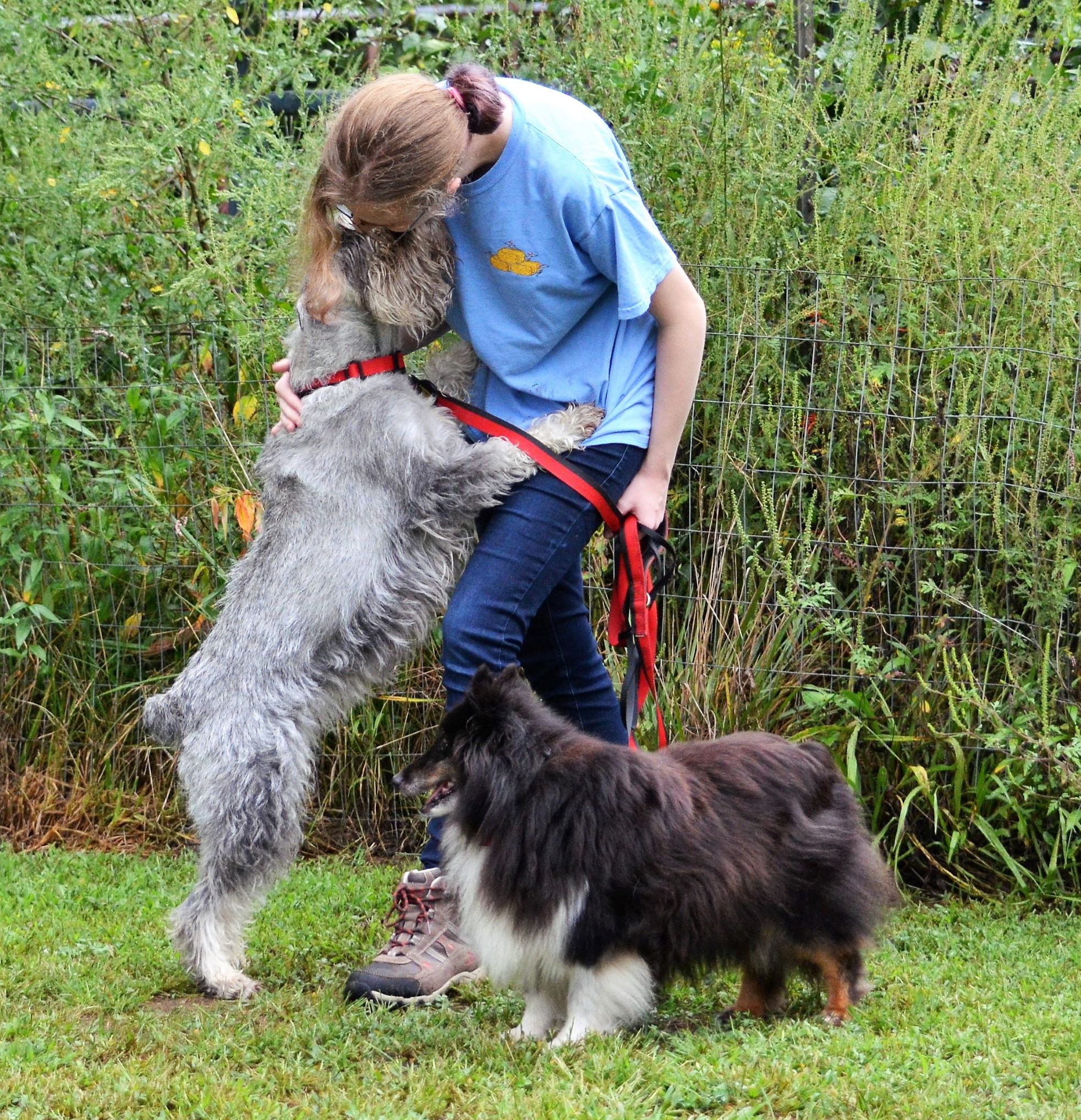What is the best type of dog?

My daughter Sarah when she was 14, with Uhura and Foster.
These is a loaded question. The best breed or type of dog is the one that suits your family the best. Put a haphazardly chosen Labrador retriever in a home that is unsuited for it and the potential for trouble is greater. Put a carefully chosen Rottweiler in a home suited for it and the dog can be a wonderful companion!
There is no 100% safe breed or cross of dog regardless of what anyone will tell you.
Ultimately, it is the dog owner that creates the type of dog - safer or not. If we chose the best breed of dog for our home as well as a good source for our dogs, this is a step in the right direction. Next is how well we train and socialize out dogs. A poorly bred, poorly trained and poorly/improperly socialized dog is a concern. A dog put in situations he is expected to tolerate and his stress signals are ignored is a dog more likely to bite.
What are the biggest mistakes dog owners make? Well, there are many, but I have narrowed them down to five main categories:
1) Failure to research the desired dog. Nothing irks me more than having someone come up and say they got the dog because they liked how it looked and now they cannot handle it. A family got a Border Collie puppy for their small farm. But they wanted a laid back breed. This is not a Border Collie. A former manager of mine got a Bulldog puppy and he wanted a dog capable of jogging with him. This is not a Bulldog. My old and now years passed Hunter was given up because the family wanted a small dog. Well Hunter was a cross between an Australian Shepherd and a Newfoundland, neither are small breeds! Getting a dog based on what you see on TV or in the movies is irresponsible. What makes a breed excel in these fields can often make it a tough pet for the average dog owner. What about size? Can you physically handle the dog you want? A smaller, frail elderly person may be better suited with a smaller dog and not something like a Great Dane. Even a gentle bump from a giant breed can send an owner sprawling and injured.
2) Failure to research the source of the dog. Just because you know all you can about a breed or the breeds going into the cross you are looking at adopting does not mean your research is done. Dogs should be gotten from two places only: reputable breeder or a good rescue group. Sadly, there are many rescues placing marginal dogs, dogs with serious behavioral issues, etc., and insisting they only need a little love. In reality they may need a LOT more than the average owner is capable of doing. If you are working with a breeder, find a breeder who is doing the work to make sure they are doing all they can to breed the best dogs possible. If you are looking for a companion, you may wish to avoid a dog bred for serious working ability. For example, a Labrador from generations of working lines may be more dog than you are looking for.
3) Failure to realize various commitments. The less time spent with a dog, the worse off it is and the greater chance for behavioral issues starting. Dogs are also a lifetime commitment, anywhere from 8 to 15+ years. Dogs require financial commitment.
4) Failure to be consistent (owner is always changing the rules).This goes with both training and daily life. If Mom and Dad forbids jumping for attention but the children do things that encourage it, the dog becomes confused. This leads to stress, anxiety and possibly acting out. If you constantly change cues during training when you want the dog to down and use Down, Lie Down, Lay, whatever as opposed to picking one word and using it, this adds to confusion. Or, teaching a puppy by paper training that it is OK to potty in the house and NOW you do not want him to potty inside, this greatly slows house training. Confusion and the subsequent building of anxiety does nothing to help the dog learn and can lead to issues later.
5) Failure to PROPERLY train and socialize.We have grown a lot with what we know abot socializing and vaccines. If you go to carefully chosen areas it is OK to begin classes a week after the first set of vaccines has been given. Avoid dog parks and pet supply stores where sick dogs may be taken BUT garden centers, home improvement stores, wineries, outdoor shopping centers, cafes with outdoor seating, play groups at training centers, etc are all safer alternatives. It is vital to begin training and socializing at home as soon as the pup comes into the home. Puppies can start leash training and learn basic cues like sit and down. They can be exposed to walking on different surfaces like boards, bubble wrap, wire mesh. They can be exposed to different sounds and smells and hats, uniforms, etc. Get creative and if your pup can encounter it outside the house, try to mimic it on your property!
(from Five Mistakes Dog Owners (and Potential Owners) Make, originally written in 2002, West Wind Dog Training)
The Safe Kids/Safe Dogs Project